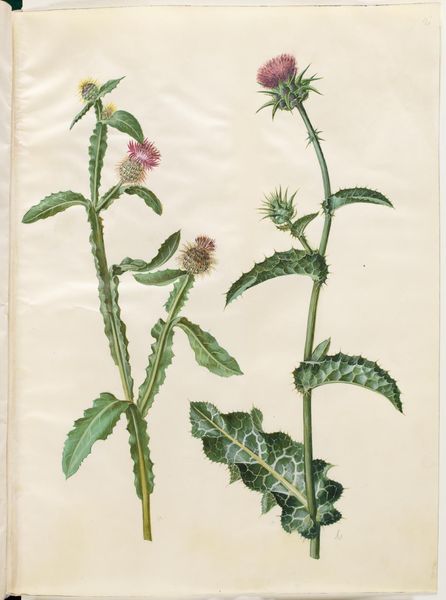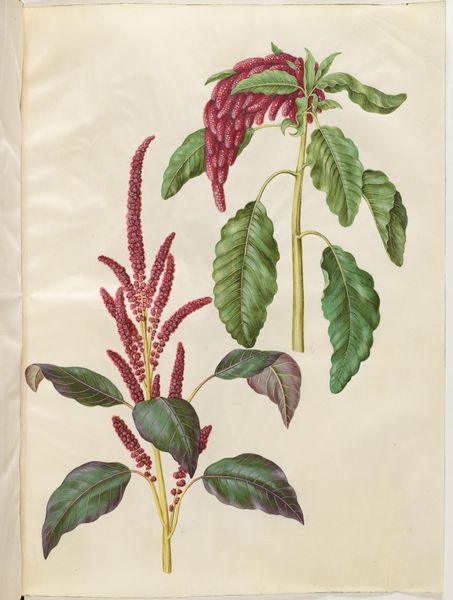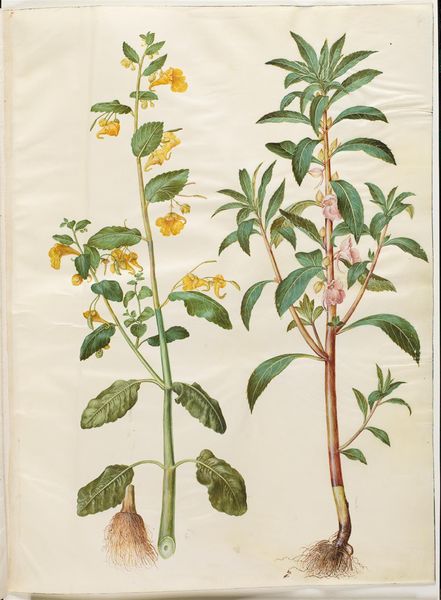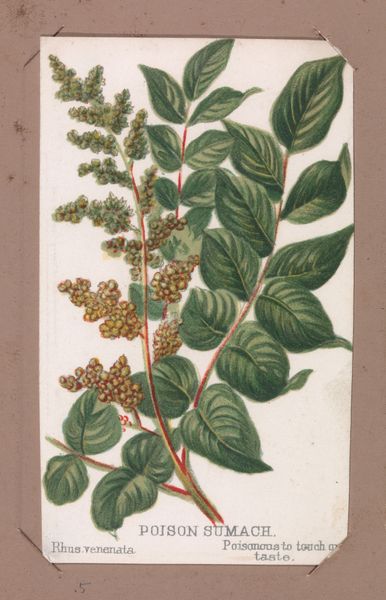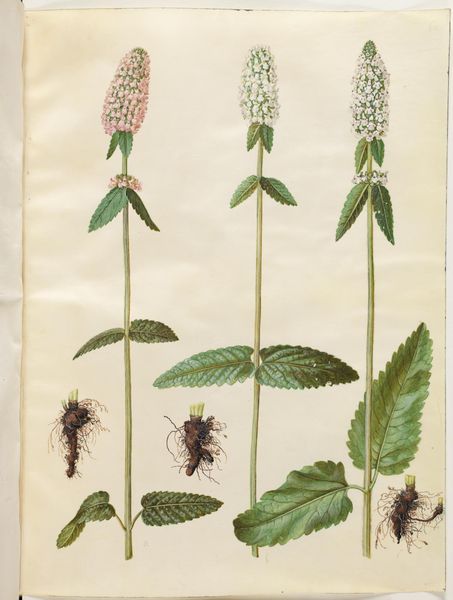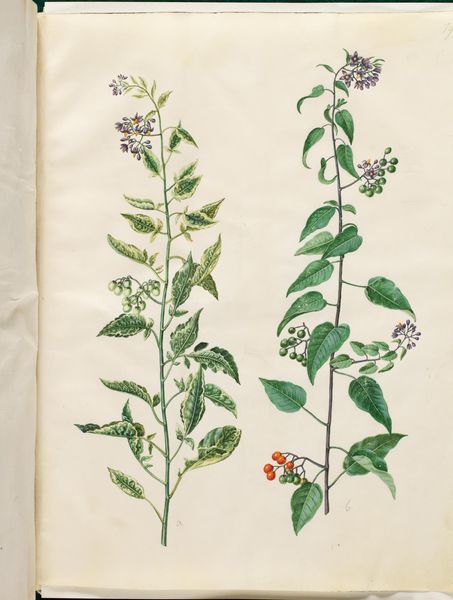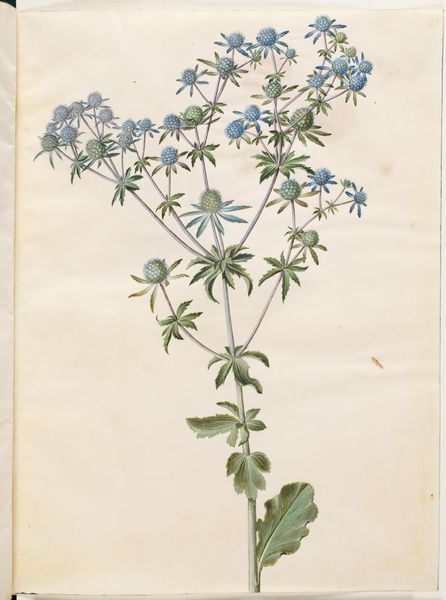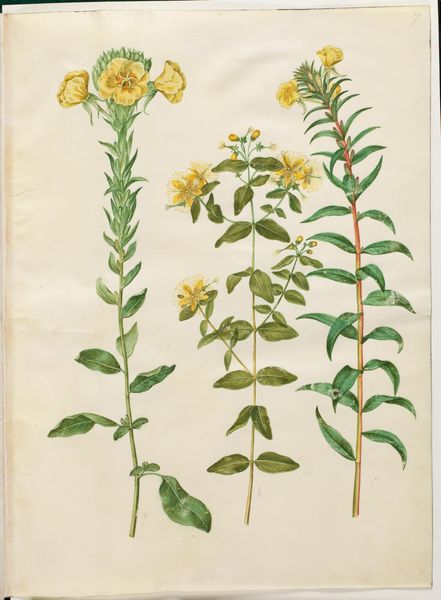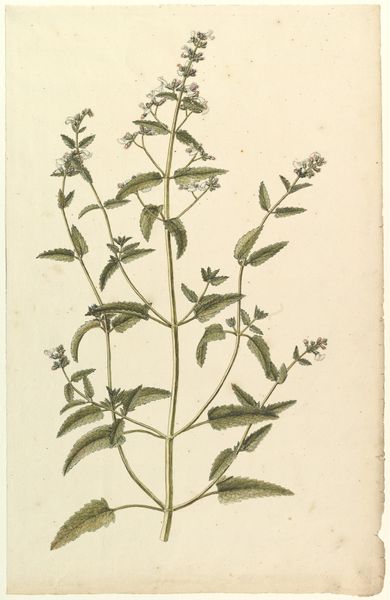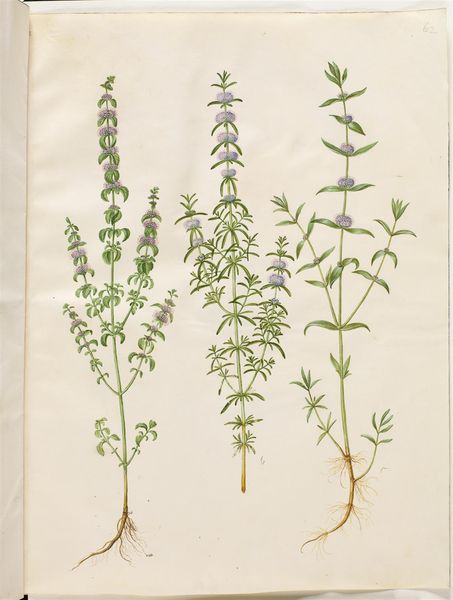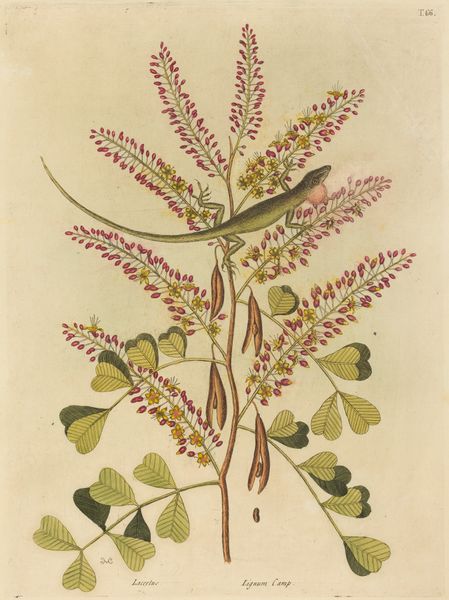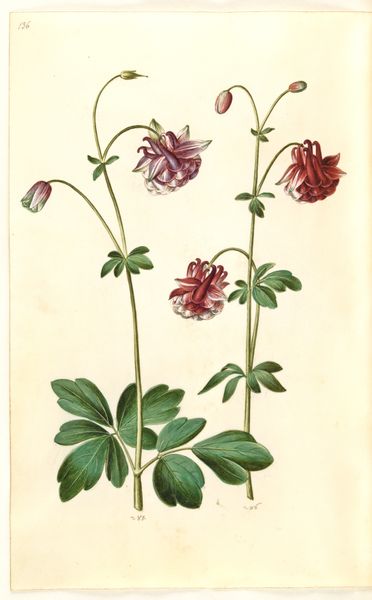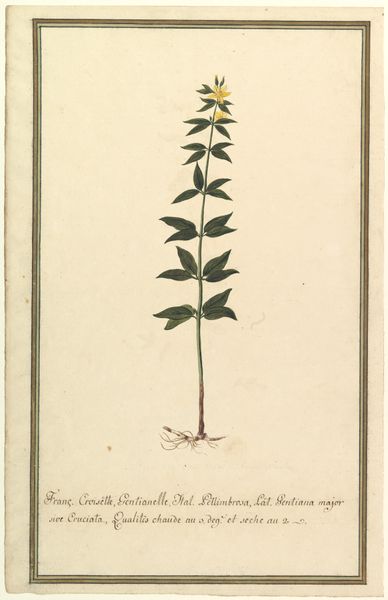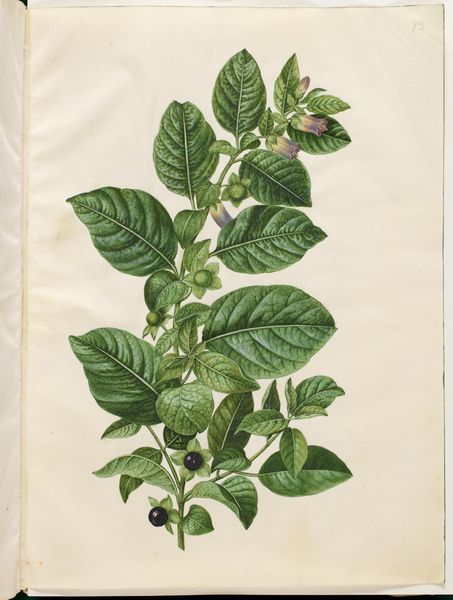
drawing, gouache
#
drawing
#
toned paper
#
gouache
#
personal sketchbook
#
linocut print
#
ink colored
#
sketchbook drawing
#
watercolour bleed
#
watercolour illustration
#
sketchbook art
#
botanical art
#
watercolor
Dimensions: 505 mm (height) x 385 mm (width) (bladmaal)
Hans Simon Holtzbecker painted this Amaranthus cruentus on paper, sometime in the 17th century. Look at the vibrant red inflorescence, which gives the plant its name, derived from the Greek word for "unfading" or "immortal," and "cruentus" meaning blood red. This flower, with its connotations of immortality, links to ancient symbols of rebirth and eternal life. Think of the Egyptian lotus, which closes each night and reopens with the dawn, or the phoenix rising from ashes, symbols of cyclical renewal. Holtzbecker's rendering carries echoes of these older, more primal symbols, connecting the viewer to a deep, shared past. Consider how the vivid red color evokes intense emotions. In many cultures, red symbolizes passion, energy, and vitality, but also blood, sacrifice, and danger. The presence of these symbols is not accidental; they tap into our collective memory, engaging us on a subconscious level. Notice how, over centuries, the "unfading" flower has resurfaced, evolving and taking on new meanings. It's a reminder that the past is not a linear progression but a cyclical return, where ancient symbols reappear in new forms, enriched by the passage of time.
Comments
No comments
Be the first to comment and join the conversation on the ultimate creative platform.
